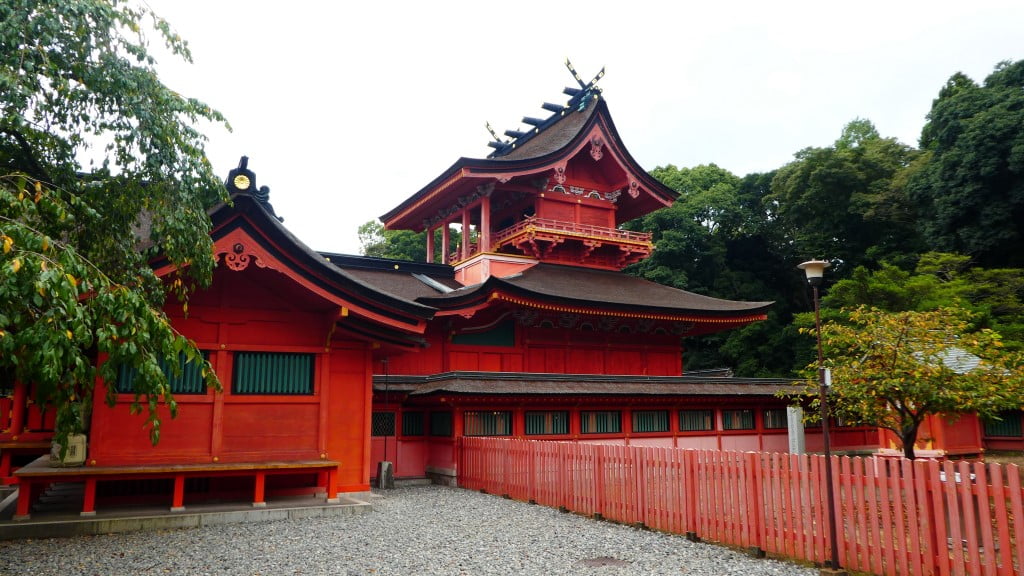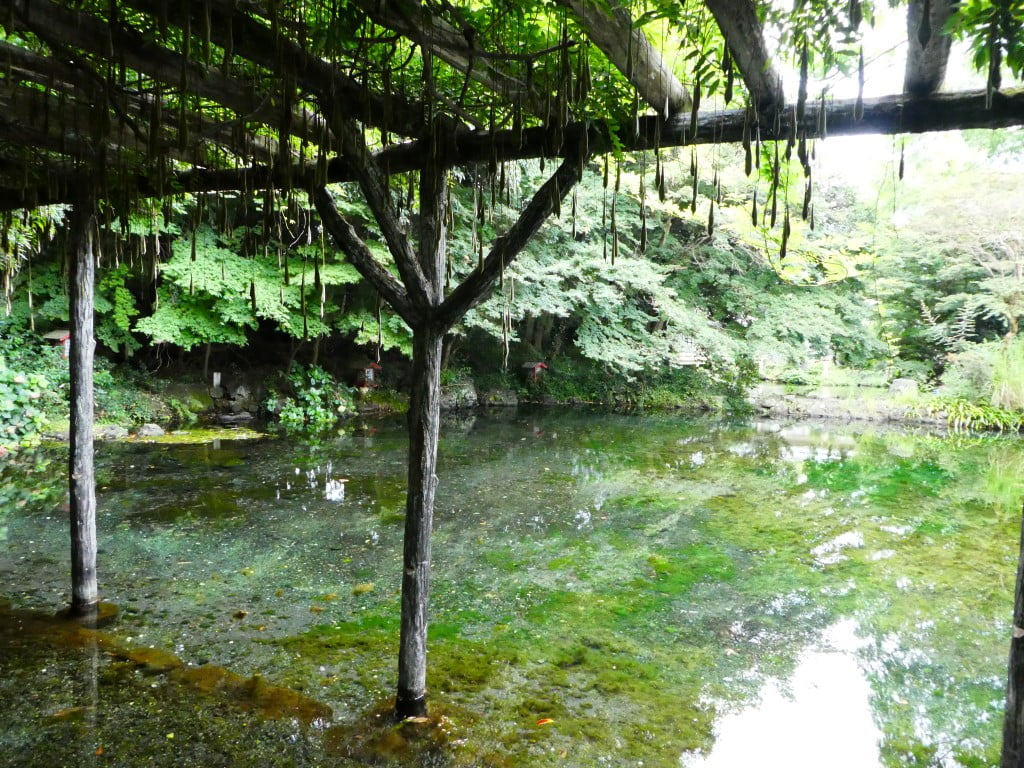The Fujisan Hongu Sengen Taisha Shrine (富士山本宮浅間大社) at Mount Fuji is one of the oldest temples in Japan. Located in the town of Fujinomiya, this shrine is officially the starting point of the pilgrimage to Mount Fuji. It is also the headquarters of the 1300 Asama shrines that exist in Japan. What is the history behind this interesting temple? In this article, I will explain what Asama shrines are and give you a historical explanation of why this is the starting point for the pilgrimage to Mount Fuji.
Are you planning a visit to the area of Mount Fuji? In the Mount Fuji Travel Guide you can find all the historical hightlights of this area in Japan.

The foundation of the Fujisan Hongu Sengen Taisha Shrine
When Mount Fuji erupted in the second century BC, much of the surrounding area was completely destroyed. Emperor Suijin (97-30 BC), the eleventh emperor of Japan built a small temple that can be seen as the precursor of today’s Fujisan Sengen Shrine. He built this shrine to appease Mount Fuji and protect the region from disaster.
In 806 AD, the temple moved to its current location and served as the headquarters of the Asama shrines. An Asama shrine is dedicated to the worship of the goddess of volcanoes, especially those of Mount Fuji. Most of the 1,300 shrines are located around Mount Fuji, which is the highest mountain in Japan at 3,776 metres.

Konohanasakuya-hime: Goddess of Mount Fuji
The goddess honoured by this shrine is Konohanasakuya-hime. In Japanese mythology, she represents blossom and delicate life. She is also the goddess of Mount Fuji and all volcanoes. By worshipping her at the Fujisan Sengen Shrine, people hope to prevent natural disasters. Konohanasakuya-hime was married to Ninigi-no-Mikoto and her father was Ohyamazumi-no-kami. Her father was Ohyamazumi-no-kami. Dad was the god of all mountains but gave the most beautiful mountain to his daughter: Mount Fuji.

The earthquakes of 1633 and 1854
The importance of the Fujisan Sengen Taisha Shrine is shown by the fact that many lords and samurai came here to pray or offer gifts to the shrine. Tokugawa Ieyasu (1543-1616), ruler of Japan from 1603 to 1605 had the temple rebuilt as a sign of gratitude to his allies. But during the earthquakes of 1633 and 1854, large parts of the temple were destroyed. The inner shrine, outer shrine and tower gate are the only buildings from that period.
Despite this, the Fujisan Hongu Sengen Taisha Shrine is now an important cultural heritage site in Japan. It is even on the UNESCO’s World Heritage List along with Mount Fuji since 2013.
Would you like to enjoy an amazing view of Mount Fuji? Go to the Chureito Pagoda and Arakura Sengen Shrine in Fujiyoshida. Read more about the historical background of this thrilling place in Japan in the article Chureito Pagoda, Japan | The Amazing View of Mount Fuji.

The start of the pilgrimage to Mount Fuji
Fujisan Sengen Shrine was originally the starting point for a pilgrimage to the top of the mountain. Pilgrims from the Kyoto region, in particular, came to this shrine. First, they worshipped the goddess to reassure her, then washed in the Wakutama Pond and started the 19-kilometre climb to the top of the mountain. Today, there are several stations on Mount Fuji and it depends on your condition where you want to start.
Are you planning to climb Mount Fuji? If so, you can only do it from the beginning of July to the middle of September. In early July there is a festival at the Fujisan Sengen Shrine to celebrate the opening of Mount Fuji to climbers. Then in mid-September, another festival is held to close the climbing season. And these are just 2 of the 159 festivals that take place here. Check out the Fujisan Sengen Shrine website for more information.

Would you like to visit Fujisan Hongu Sengen Taisha Shrine near Mount Fuji?
How to get there? The Fujisan Sengen Shrine (officially Fujisan Hongu Sengen Taisha) is a 10-minute walk from Fujinomiya Station. This station can be reached via the Minobu Line from Fuji Station. Entrance to the shrine is free.
Do you have any tips, comments or ideas about Fujisan Hongu Sengen Taisha Shrine in Fujinomiya? Then feel free to leave a message below.